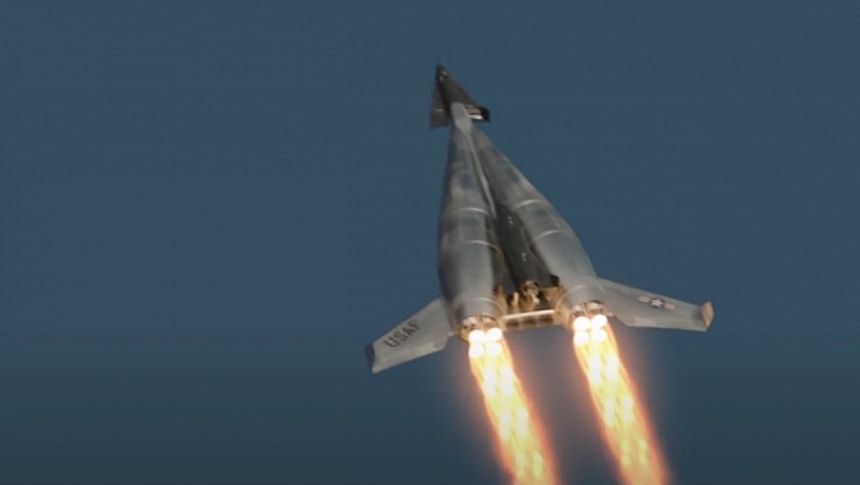A launch booster is a boring piece of machinery to look at. It's basically a cylinder filled with fuel that helps put an object into orbit, or helps a core stage do the same thing. It's in the boosters' nature to be effective, and not care one bit about aesthetics.
Long cylinders are how most of today's launch boosters are shaped. It's an effective way of designing a critical component of our space exploration efforts, and many times we don't even give them a second thought. But Boeing once did, and it came quite close to making boosters look and feel like beauty queens.
There was a time, long before SpaceX came along, when the U.S. was seriously considering going for reusable boosters. After all, reusing a crucial component of a launch system would have worked wonders on the budgets of those involved, something we can clearly see today, thanks to the many private space companies that eventually made this dream a reality.
Research into such designs has been conducted ever since back in the days of the Apollo program by all of the companies involved in space exploration, including the behemoth that is Boeing.
The aerospace company was working on the X-20 Dyna-Soar for the U.S. Air Force (USAF) when it started looking into cheaper and more effective ways of putting the spy space plane where it needed to be.
One such way was called the Model 832-40, a double-body booster with wings to make it look more like a spacecraft than a flying fuel tank.
The idea came about in the 1960s, and called on the booster to use no less than eight Rocketdyne F-1 engines, paired in clusters of four. These were to provide vertical lift, with an additional three General Electric turbofan engines to take care of horizontal flight and landing once the mission was over and the thing came back to land like a regular aircraft.
Although meant to carry the Dyna-Soar, Model 832-40 could just as well place in orbit a variety of upper stages, including a Saturn vehicle or a derivation of one. In extreme cases, the booster could also be used for deploying a land-based intercontinental ballistic missile of the Minuteman variety.
Like many other potentially game-changing ideas the aerospace industry had back in the day, the sexy Boeing booster never made it into production. It only reached a stage when a basic design of the vehicle began wind tunnel testing, but that never transformed into anything.
Modern-day technology and a talent for bringing things to life with CGI are what allow us now to enjoy the Boeing Model 832-40 booster in action, courtesy of space animation specialist Hazegrayart.
Check all the action in the video below, and see for yourself just how visually impressive the design would have been.
There was a time, long before SpaceX came along, when the U.S. was seriously considering going for reusable boosters. After all, reusing a crucial component of a launch system would have worked wonders on the budgets of those involved, something we can clearly see today, thanks to the many private space companies that eventually made this dream a reality.
Research into such designs has been conducted ever since back in the days of the Apollo program by all of the companies involved in space exploration, including the behemoth that is Boeing.
The aerospace company was working on the X-20 Dyna-Soar for the U.S. Air Force (USAF) when it started looking into cheaper and more effective ways of putting the spy space plane where it needed to be.
One such way was called the Model 832-40, a double-body booster with wings to make it look more like a spacecraft than a flying fuel tank.
The idea came about in the 1960s, and called on the booster to use no less than eight Rocketdyne F-1 engines, paired in clusters of four. These were to provide vertical lift, with an additional three General Electric turbofan engines to take care of horizontal flight and landing once the mission was over and the thing came back to land like a regular aircraft.
Although meant to carry the Dyna-Soar, Model 832-40 could just as well place in orbit a variety of upper stages, including a Saturn vehicle or a derivation of one. In extreme cases, the booster could also be used for deploying a land-based intercontinental ballistic missile of the Minuteman variety.
Like many other potentially game-changing ideas the aerospace industry had back in the day, the sexy Boeing booster never made it into production. It only reached a stage when a basic design of the vehicle began wind tunnel testing, but that never transformed into anything.
Modern-day technology and a talent for bringing things to life with CGI are what allow us now to enjoy the Boeing Model 832-40 booster in action, courtesy of space animation specialist Hazegrayart.
Check all the action in the video below, and see for yourself just how visually impressive the design would have been.










